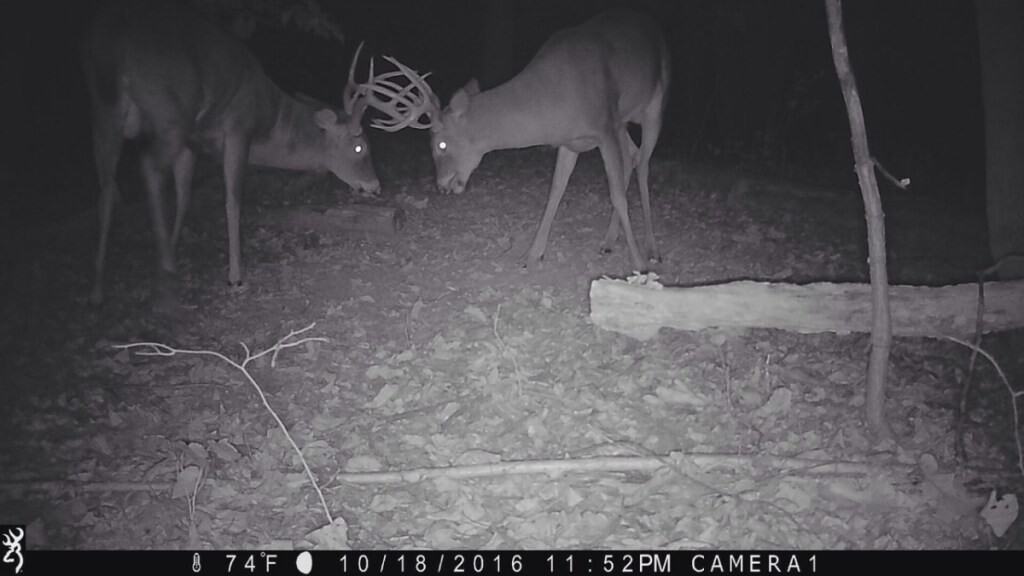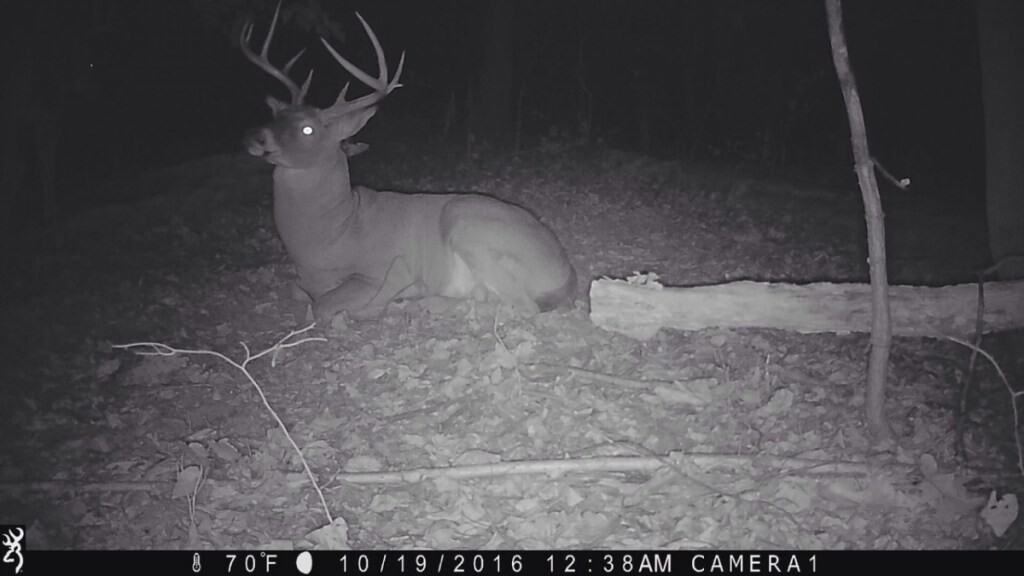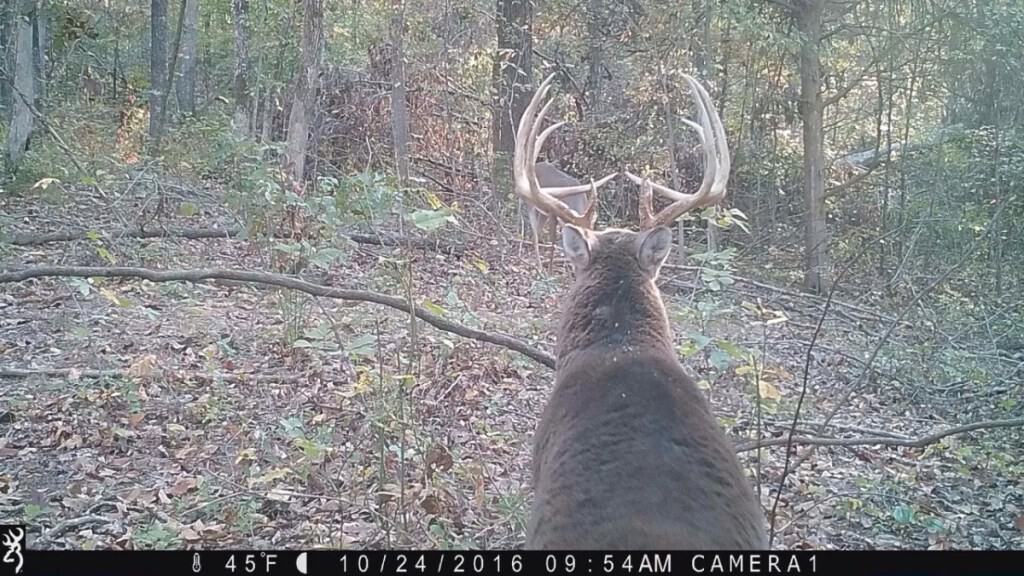There is nothing quite as annoying as having a nice buck showing up repeatedly on your trail camera, but only at night. Nocturnal bucks have been illuding hunters since the start of modern hunting, but they are not impossible to kill. That buck may move the most at night, but that does not mean he fades out of existence when the sun comes up. He has to go somewhere, your not-so-easy job is to figure out where. This may sound impossible at first, but don’t worry. That buck is not as nocturnal as you think, at least he will not be all season long.
What Makes a Buck Nocturnal?
Bucks can appear to be nocturnal for any number of reasons. The buck may just prefer to move while it is dark, or there could be too much pressure in the area. It is not uncommon for mature bucks to become mostly nocturnal when there is pressure put on them. Now this includes hunting pressure, but it could also be pressure from other predators, and even other deer. Anything that makes a buck run the other way, could make him choose to move more during the night.
This is one of the main reasons for the October lull if you believe in it. The big idea is that during a few weeks of October the bucks seem to disappear and not be as active. That is largely in part to the sharp increase in hunting pressure, which makes bucks either move to other properties that are not hunted, or move the majority of the time at night.

It is no coincidence that the October lull happens just a couple of weeks after most state’s archery seasons open. Excited hunters–including myself–have been waiting all year to rush to the stand and just have a good time. Mature bucks in the area did not get to their old age by ignoring the signs these hunters leave behind. As soon as he senses added pressure, he is going to change his habits.
He Is Not Truly Nocturnal
Alright, let’s bust the myth of the 100% nocturnal buck. No matter how old and wise a deer may be, he is never nocturnal all of the time. Whitetail get up to feed 5 times every 24 hours, so your buck is definitely going to have to feed at least once or twice while it is light out. The main problem about getting repeated nighttime pictures of a buck is that oftentimes he is not nocturnal, he is just coming from far away to that spot.
A buck has a home range of about 1 square mile, which is 640 acres. So say his home range is 600-700 acres. He then has a core area that is only 25-75 acres where he spends nearly 75% of his time. When he does decide to get up and travel to an area on the outskirts of his home range, it may take him a while to get there. Just because he showed up on your camera at 2 am, does not mean he was bedded 100 yards away and just got up at that time. He could have been bedded over a mile away and just comes to that area every now and again, which is why you only have a few pictures of him.
Bucks like this are tricky to nail down, often times you will see him a few times, and then you may never see him again. Although if you are getting regular pictures of him, it is a good idea to put out even more cameras. Highlight any places of interest that you think your buck may be traveling to, then place a camera there. You may be surprised to find out that he travels during the day at a camera that is just a couple hundred yards away from your original camera.
Change up Your Cameras & Find His Core
The key to finding this buck during legal shooting hours is finding his core area. His core area is where he feels the safest, and that is where he will be during the day. His core area will consist of his most trusted bedding area and a food source or two. In order to find his core area, you are going to have to do some extensive scouting.

The strategy I like best for finding a bucks core area is called the wide net approach with your trail cameras. You want to put out every camera you have around all the hot spots of where you think the buck may be going to or from. If you are getting pictures of him at night, I would leave that camera there and start placing cameras at areas a few acres away from it. Then you can get an idea of where that buck is coming from and going to when he passes by your original camera.
After you start to piece together some more information about your buck, you can start to move your cameras around, and make your “net” smaller. Then you can keep narrowing it down until you know exactly where your buck is moving, or you can trace back his core area to another section of the property.
If you trace back his core area and you figure out that his core is actually on another property, your only option is going to be to hunt him when he crosses the property line. Now if that is not possible during the early season, meaning he only comes on your property at night, there is still a chance later in the season that a cold front or the rut will push him your way.
Check out my other article about finding a bucks core area here
Be as Stealthy as He Is
Another thing I need to mention about the net approach is that you are going to have to be super stealthy. If you go rooting around his favorite trails, being loud and leaving scent everywhere, you can kiss that buck goodbye.
Every time you go to set up or check your cameras, you need to have your scent under control and you also need to move quickly and quietly. You need to move almost like a cat, spend as little time as possible in there, and be as quiet as possible. This is especially important when you start to narrow down where this buck is spending his time. The closer you get to him, the higher chance he has of busting you. The worst part is, you will not even be there when he smells your scent and turns right around.
My Dad is a pro at this… there was more than one time when I was a kid where he seemed to run through the woods without making a single sound and there I was lagging behind going half as fast and making plenty of noise. Although over the years I have gotten much better at it, I am not sure I will ever be as good as he is.
When you finally do have a good idea where this buck is and you are ready to go get in the stand after him, I suggest that you get to the stand good and early. If your buck is moving during the night and you are hoping to catch him as he is heading back in the morning, you do not want to get to your stand 20 mins before daylight. You want to get there an hour plus, get good and set up, and then try not to fall asleep. That way when he walks past after shooting hours, you are ready for him and can sling an arrow his way.
The Perfect Time to Strike
What does it matter if you find this bucks core area and know where he travels if he never does it in the daylight? Well, he will eventually come out in the daylight, you just have to be there when he does. One of the perfect times to be out in the stand after a buck like this is just after an October cold front. October cold fronts get just about every deer on their feet.
The change of temperature is a signal to deer that it is about to get much colder and that makes them want to get up and pack on a few more pounds. The colder days in the winter require deer to spend more calories per day, so they are going to lose some weight if they do not get up and start eating. Luckily for you, they move the morning after one of these cold fronts blow through, that is when your nocturnal buck will be on his feet during the daylight. Especially if he is coming to your property for food.

The rut is the next thing that is going to make deer move. Obviously, deer patterns change dramatically during the rut, and by dramatically I mean that any pattern they did have can be thrown out the window. Bucks are going to be running everywhere, and they commonly run outside of their core area. So if your nocturnal buck is familiar with your property–because you have him on camera– then he may also chase a doe in that direction as well.
Conclusion
Hunting nocturnal bucks can be a daunting task at first, but with the correct amount of scouting and a little luck, you can catch him during the day. The first step is to nail down where he is spending the most of his time, aka his core area. Use your trail cameras and the wide net approach to narrow down where this buck is moving to and from so you can figure out his pattern. Then it is a waiting game for the weather to catch up. If you get a nice October cold front to come through, that is the perfect time to strike. You can bet that your buck will be on his feet during the morning hours after a cold front. If you do not get favorable weather, there is still plenty of time during the rut to get in there after him. The information you gather about his core area and patterns may not be as useful during the rut, but he will be on his feet during the day and if you are lucky you can catch him slipping up.
